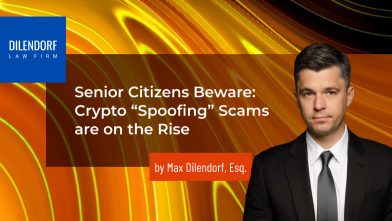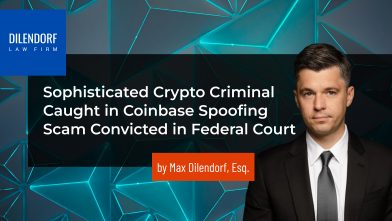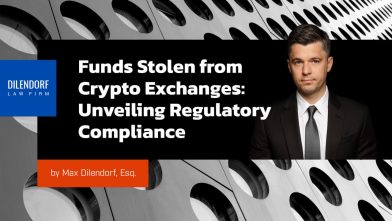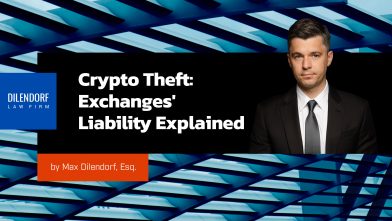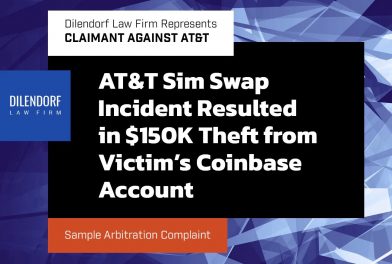Buying US Green Card with Bitcoin? The EB-5 Program & Cryptocurrencies
You can also download this article in PDF format here.
Each year, the United States government issues around 10,000 EB-5 visas to high-net-worth immigrant investors and their qualifying family members. Those admitted to the country on an EB-5 visa are granted conditional residency for two years. At the end of that period, if the requirements of the EB-5 program are satisfied, those conditions can be removed.
With the increasing popularity of cryptocurrencies (“crypto”) among foreign investors, and the continuing popularity of the U.S. as a target for their investments, it is no surprise that individuals around the world are becoming more interested in participating in the EB-5 program using their cryptocurrency holdings.
However, at present, there is little legal guidance available regarding the use of cryptocurrencies in the EB-5 process. The U.S. Citizenship and Immigration Services (USCIS) have suggested that cryptocurrencies may be able to satisfy the requirements of the program, but that any such investments will be assessed on a case-by-case basis.
That leaves it to investors and their counsel to determine how best to satisfy the requirements of the EB-5 program, particularly regarding the evidence that must be provided to prove that an investment of crypto qualifies under the program.
To help investors understand how those evidentiary requirements could be met, this article begins by discussing that issue in section 1. It then provides a more general overview of the EB-5 program and application process in sections 2 and 3. Readers familiar with the EB-5 program may wish to skip the last two sections, but those completely new to it may want to begin there.
1. EB-5 Investments Using Cryptocurrencies
In general, to participate in the EB-5 program, investors must contribute at least $900,000 (since November 21, 2019) to finance a new business enterprise in the United States. They must also prove that the contributed funds were owned by the investor prior to his or her contribution and were obtained through lawful means.
To date, there is no clear guidance from USCIS regarding the use of cryptocurrencies in EB-5 investments. However, in March 2017, the Immigrant Investor Program Office Division Chief released a statement on that subject, saying that:
USCIS is currently considering issues involving virtual currency such as Bitcoin. USCIS cannot provide blanket assurances regarding any particular form of transfer, but we will continue to evaluate evidence provided by petitioners to determine whether the relevant statutory and regulatory requirements have been met.
In other words, USCIS is currently treating cryptocurrencies the same as any other type of investment capital. Precisely what that means will become clearer in the next sections of this article, but for now, suffice to say that an investor must still satisfy the evidentiary requirements that ownership and lawful source of funds be proven.
Proving Ownership and Lawful Source of Crypto Funds
Proving ownership of cryptocurrency is more difficult than proving ownership of other forms of investment capital. Cryptocurrencies and digital wallets are not normally tied to a person’s identity.
A handful of different strategies have been suggested for proving crypto ownership. For example, an investor may be able to register his or her wallet with an exchange that confirms his or her identity.
However, as of yet USCIS has not approved of any particular strategy for proving ownership of digital wallets or cryptocurrency. Although some applications involving crypto investments are now pending, USCIS has not yet fully processed those applications.
Proving that an investor’s cryptocurrency was obtained through lawful means may present another issue for some investors. On one hand, if an investor’s only transaction using a cryptocurrency was the initial purchase, and he or she has simply held onto that crypto ever since, then proof of lawful source will be similar to proof for traditional forms of capital.
In fact, the investor may be able to prove a lawful source more easily in that case than in other cases. For example, today, it would take about 25 bitcoins to cover a $900,000 EB-5 investment. But if an investor purchased those bitcoins in 2013, it might have only cost him or her $8,000. As a result, he or she would only need to prove the source of that $8,000 rather than $900,000.
On the other hand, if an investor’s digital wallet shows many transactions—e.g., because he or she accepts cryptocurrency as payment for goods or services—proving the lawful source of funds will be much more difficult. Satisfying USCIS will likely require a two-prong approach:
- Traditional evidence. First, investors should submit all records typically required by USCIS as evidence of ownership and lawful source. (See “Evidence That Must Be Provided to USCIS,” below, for more detail.) They should include any business records, such as invoices, related to their wallet transactions.
- Wallet analysis. Second, each investor should contract with a third-party blockchain-analysis firm to analyze his or her digital wallet and crypto transactions. Such analyses can flag suspicious transactions, generate risk scores, and identify any questionable wallets that have transferred funds to the investor’s wallet. If the analysis shows the wallet is “clean,” that can be helpful evidence both for USCIS and for the AML/KYC reviews conducted by financial institutions involved in the process (discussed below).
Ultimately, this remains a developing area of law. An investor should work closely with experienced advisers to carefully analyze the investor’s circumstances and determine what evidence may be appropriate on a case-by-case basis.
Making the Investment: Crypto or Dollars?
Although an investment using cryptocurrency may be allowed by USCIS, there remains the question of how that investment is actually transferred to a regional center. Some regional centers have expressed a willingness to accept investments in bitcoin, but for most investors, the process will require exchanging their bitcoin for dollars and transferring the dollars to the regional center.
This could be done, for example, in one of the following ways:
- U.S. bank account linked to a licensed U.S. cryptocurrency exchange. An investor could use a licensed U.S. cryptocurrency exchange to convert his or her crypto into fiat, then transfer the funds to a linked U.S. bank account. However, in our experience, banks are wary of accepting such crypto-related transfers.
- Using a licensed third-party service provider to convert cryptocurrency to fiat. As an alternative, an investor can send the necessary crypto through a licensed third-party service provider that automatically converts it to dollars and transfers those dollars directly to the regional center.
Other options may, of course, be available. For example, an investor may be able to convert his or her cryptocurrency into his or her local currency, and then exchange those funds for U.S. dollars.
2. Overview of the EB-5 Program
Congress created the EB-5 program in 1990 to attract foreign investment in the United States. Through the program, a foreigner who invests in a new business in the United States can obtain an EB-5 visa and receive conditional residential status leading to lawful permanent residency (a “Green Card”).
Although commonly spoken of as a way to “buy” a Green Card, the EB-5 program actually involves a business investment. Ideally, at the end of the EB-5 process, the investor will receive his or her funds back with a return on that investment. Of course, as with any investment, those made under the EB-5 program come with significant risks.
To qualify for an EB-5 visa, a foreign investor must meet the following three requirements:
- Contribute the minimum investment amount
- To a new commercial enterprise
- That will create at least 10 full-time jobs.
A. Minimum Investment Amount
In general, the EB-5 program requires that a foreign investor contribute at least $1 million to a new commercial enterprise. This contribution can be made in cash, equipment, inventory, other tangible property, cash equivalents, or debt secured by the investor’s own assets and for which he or she is personally liable.
However, if the new commercial enterprise is located in a “Targeted Employment Area,” the investor need only contribute $900,000. A Targeted Employment Area is one that is rural or that has experienced relatively high rates of unemployment.
These minimum investment amounts make the United States particularly attractive to foreign investors seeking to immigrate. Similar programs in other countries typically impose higher investment thresholds. For example, in the U.K., the minimum investment required ranges from £2 million to £10 million ($2.7 million to $13.2 million).
However, in recent years, there have been proposals to increase the minimum investment amounts required under the EB-5 program. For example, members of Congress and the Department of Homeland Security have proposed increasing the minimum investment amounts to $1.35 million in Targeted Employment Areas and $1.8 million in other areas.
So far, these proposals have not become law, but investors should keep the potential for increased investment thresholds in mind when considering when to begin the EB-5 process.
B. New Commercial Enterprise
Second, to qualify under the EB-5 program, the investment must be made in a new commercial enterprise. “New commercial enterprise” means a for-profit business established after November 29, 1990, although businesses established before that date may qualify in certain circumstances.
The new commercial enterprise can be established in one of two ways. First, an investor can create a new business that he or she personally manages. This approach tends to pose a higher risk of business failure than the alternative. Consequently, less than 5% of EB-5 applicants choose to invest in this way.
Alternatively, investors can invest in a new business through a regional center. A regional center is an organization that pools immigrant investors’ funds and uses them to finance the new commercial enterprise. Each investor must still individually satisfy the minimum investment amount to qualify for an EB-5. More than 95% of immigrant investors invest through a regional center.
C. Create 10 Full-Time Jobs
Finally, the EB-5 program requires that the new commercial enterprise will create full-time positions for at least 10 qualifying employees—individuals other than the investor and his family members who are legally authorized to work in the U.S. A full-time position is one that requires 35 working hours or more per week.
If the investor chooses to create his or her own new business, then those 10 positions must be “direct jobs.” A direct job is one in which the worker is an employee of the investor’s new business.
In contrast, if the investor chooses to invest through a regional center, then the positions can be “indirect jobs.” An indirect job is one held by a non-employee of the new business (such as a contractor) but that was created because of the new business (e.g., specifically to service the new business).
3. The EB-5 Application Process
Obtaining a Green Card through the EB-5 program is a lengthy process. For most investors, the first step in that process is choosing a regional center in which to invest. Then, the investor must file multiple applications with the federal government.
Throughout this process, the immigrant and his or her investment will undergo multiple anti-money laundering and Know Your Customer (AML/KYC) checks and similar reviews.
Choosing a Regional Center
As of early September 2018, there were 886 regional centers in the United States. These organizations may be privately held, publicly owned, or a private-public partnership.
Although each regional center must be designated as such by USCIS to participate in the EB-5 program, that designation is not an endorsement of the regional center’s activities, does not guarantee that the center has complied with U.S. securities laws, and does not reduce the risk of investing with that center.
Foreign investors should approach investing in a regional center in the same way as any other investment. They should hire investment advisers experienced in dealing with regional centers and conduct other due diligence, including carefully reviewing any private-placement memorandum or similar investment documents from regional centers of interest.
Visa and Green Card Applications and Evidence
Obtaining an EB-5 visa requires filing multiple applications with one or more government agencies. Chronologically, these applications include:
- Form I-526, Immigrant Petition by Alien Entrepreneur.
An investor who has invested the minimum investment amount, or who is actively in the process of doing so, can file Form I-526 to qualify for participation in the EB-5 program. Form I-526 must be accompanied by a filing fee of $3,675 and extensive supporting evidence to establish an investor’s eligibility.
The estimated time for processing a Form I-526 is 20.5 to 26.5 months.
- Either Form I-485, Application to Register Permanent Residence or Adjust Status or Form DS-260, Application for Immigrant Visa and Alien Registration.
After USCIS approves an investor’s Form I-526, the investor must apply for adjustment of status with USCIS if he or she is already present in the United States (using Form I-485) or for a visa from the Department of State otherwise (using Form DS-260).
The filing fee for form I-485 is $1,140, plus an additional $85 for biometric services.
Once Form I-485 is approved, or an immigrant is admitted to the country on an EB-5 visa, he or she will be granted conditional permanent residence for two years.
- Form I-829, Petition by Entrepreneur to Remove Conditions on Permanent Resident Status.
Within 90 days before the end of an investor’s two-year conditional permanent residence, the investor must file Form I-829 to remove the conditions placed on his or her residency. If the USCIS approves the investor’s Form I-829, then he or she will obtain a Green Card, becoming a lawful permanent resident.
The filing fee for Form I-829 is $3,750. A separate biometric services fee of $85 is also required for the investor and each member of his or her family immigrating with him or her. The time for processing Form I-829 ranges from 29.5 months to 38.5 months.
AML/KYC by Financial Institutions
Throughout the EB-5 process, an investor will undergo multiple AML/KYC checks and similar reviews. AML/KYC is a process that financial institutions (such as banks) must undertake to ensure that their customers are who they claim to be, legally permitted to bank or invest in the United States, and that their funds were obtained from lawful sources.
A foreign investor may first encounter AML/KYC checks when he or she opens a U.S. bank account. The bank will request evidence to prove the investor’s identity and source of funds, including the investor’s ITIN or EIN, a copy of his or her passport or driver’s license, utility bills, and information about income sources.
Although regional centers are not necessarily the types of financial institutions that must conduct AML/KYC checks, IIUSA, a regional-center trade group, advises that they do so in any event. As a result, an investor will likely undergo a second round of checks when he or she invests in a regional center.
Evidence That Must Be Provided to USCIS
In addition, USCIS performs its own reviews of an investor’s identity, investment, and source of funds. As discussed earlier, an investor must provide evidence to prove (1) that he or she is the legal owner of the capital invested and (2) that the capital was acquired through lawful means.
To prove that an EB-5 investor owns the invested funds and acquired them through lawful means, the investor must generally provide the following evidence, as applicable:
- Foreign business registration records;
- Corporate, partnership, and personal tax returns, including income, franchise, property, or other tax returns filed within five years with any jurisdiction within or outside of the United States;
- Evidence identifying any other sources of capital (such as business entity annual reports, audited financial statements, instruments documenting gifts to the investor, earnings statements from an employer, or similar documentary evidence); or
- Certified copies of judgments or evidence of any pending civil, criminal, or administrative actions involving monetary judgments against the investor within the past 15 years.
To illustrate how thorough the USCIS requires an investor’s evidence to be, in one case we are familiar with, an investor who earned his money through a wholesale business had to provide USCIS with copies of every receipt he had issued to the retailers he sold to.
What types of evidence might be used to satisfy USCIS requirements with respect to investments of cryptocurrencies is discussed above, in section 1.
Conclusion
As the discussion above makes clear, qualifying for permanent residence under the EB-5 program is always a complicated process. Making an EB-5 investment using a cryptocurrency (whether as such or after converting it to dollars) adds further complications to the process.
Without clear guidance from USCIS about the use of cryptocurrencies, investors must be careful when using crypto to participate in the EB-5 program.
High-net-worth foreigners interested in immigrating to the United States under the EB-5 program should consult with experienced financial advisers for assistance in doing so, particularly if a cryptocurrency will be used to fund part or all of the investment amount.
Resources
- EB-5 Immigrant Investor Program | USCIS
- EB-5 Filings Tips
- USCIS EB-5 Resources
- Processing Times Information
- About the EB-5 Visa Classification
- USCIS Questions and Answers: EB-5 Economic Methodologies
- USCIS EB-5 Support Center
- Citizenship for Sale: Oversight of the EB-5 Investor Visa Program
- USCIS Proposes Rules Increasing Minimum Investment Thresholds for the EB-5 Immigrant Investor Program
- EB-5 Policy Manual

